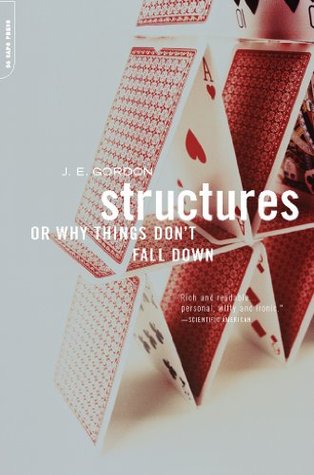When a newly made riveted joint between steel or iron plates has settled itself into a reasonable distribution of load, then rust may have a chance to play its beneficent part. The products of corrosion, iron oxides and hydroxides, expand and so lock the joint and prevent it from sliding backwards and forwards when the load is reversed. Furthermore, the rust transmits some of the shearing forces between the plates, rather like a glue, and therefore the strength of a riveted lap joint generally increases with age.
Welcome back. Just a moment while we sign you in to your Goodreads account.


